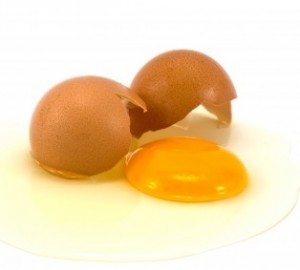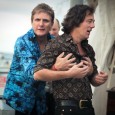Sophia Bashford investigates whether we’re getting our money’s worth for free-range eggs.
I’m standing in Aisle 4 of the supermarket – the eggs section. Staring at the shelves in front of me, I’m met with a familiar dilemma.
Do I pay the extra couple of dollars for ‘free-range’ eggs and do my bit for hen welfare, or do I go for the cheaper option of cage eggs? My pupils are confronted with a bombardment of labels: ‘free-range’, ‘cruelty-free’, ‘organic’, ‘happy hens’.
My animal-welfare consciousness kicks in. I pick up a punnet of a dozen ‘free range’ eggs and add them to my trolley. I wouldn’t want to be eating eggs laid by unhappy hens.
Worryingly, a wealth of new evidence has come to light that questions whether the choice between ‘free-range’ and ‘cage’ eggs is as simple as we all assume.
The Free Range Farmers Association (FRFA) estimates that around 90 per cent of the eggs sold in Australia as ‘free-range’ do not meet the welfare standards expected by consumers.
Ian Littleton, NSW FRFA president and free-range farmer, said that overstocking on farms was the biggest problem in the egg industry. Littleton said that there was a move by many large egg companies at the moment to capitalise on the free-range market and sell eggs from farms that are, “well overstocked, which we wouldn’t describe as free-range at all”.
What many of the egg companies don’t reveal on packaging is that their farms have stocking densities of well over the limit of 1500 hens per hectare set by statutory code.
Overstocked farms exhibit severe problems of feather-pecking, cannibalism, disease, fox attacks and inadequate manure cleaning. FRFA farms have stocks of less than 750 hens per hectare.
Greens MP John Kaye last year tried to pass the Truth in Labelling (Free-range Eggs) Bill 2011, but it was not legislated by the NSW Parliament.
A new report into hen stress levels has shed further light on how deceptive ‘free-range’ labels can be. The study, by Dr Jeff Downing from the University of Sydney, measured hen stress levels in free-range, barn and cage production systems.
Contrary to what most people would expect, Dr Downing found that four of the five hen groups that were most stressed were those in barn or free-range farm systems rather than cages.
Dr Downing said his findings show that “what is happening on the individual farm has far more influence than the type of production system”.
He explained that one of the most stressing factors for hens is social discomfort from unstable group hierarchies, which is hard to control on large free-range farms.
“In these fairly large group sizes that’s going to be there fairly persistently,” he said.
Dr Aaron Cowieson, head of the Poultry Research Foundation, said he was surprised by the results.
“What Jeff has demonstrated is that you can have a badly managed free-range system, or you can have a badly managed cage system,” he said.
However, Dr Cowieson views the findings as an opportunity for researchers who are genuinely interested in hen welfare.
“I actually see this as a chance to identify the sources of stress that are common in all types of production systems,” he explained.
These findings throw a spanner into the works for what the public perceives to be a clear-cut ‘free-range vs cage’ eggs debate. While we think we are purchasing ‘free-range’ eggs that have been laid by happy, roaming hens, we may be simply paying extra for eggs from badly managed farms.
Over the past ten years, the controversy over ‘free-range’ vs ‘caged’ eggs has reached new heights. With the tide of public pressure pushing producers to use more animal-friendly systems, consumers have increasingly viewed ‘cage’ systems as unethical.
This is because people recognise, and rightly so, that it is cruel for hens to be incarcerated in small cages and made to lay egg after egg for human consumption. If cage systems are cruelly maintained, hens are not able to move freely, see sunlight or have access to fresh air, and are crammed in closely next to each other.
Clearly, we need to look beyond the trendy ‘free-range’ labels and inform ourselves better on where our eggs come from.
For example, the RSPCA’s ‘Choose Wisely’ campaign aims to give consumers information about more human food choices. Mark Jeffreys, education manager at RSPCA NSW, advises people to log onto the Choose Wisely website. He says the website will provide information so that “you should be able to find a restaurant that can provide you with humane food”.
Dr Cowieson makes the point that important as bird welfare may be, we also need to cnsider problems of global food shortages. He said that some of the free-range systems were less efficient than the more organised barn systems, where feed-conversion efficiency of the birds is superior because “mortality in the flock is lower and the health status is higher”.
Dr Cowieson questions whether it is ethical to advise people to move towards less efficient systems from a social sustainability point of view, when “there are still people in Australia who struggle to feed their families”.
Whatever our personal stance is on eggs, there is undeniably an endemic problem of misinformation plaguing the industry.
Ian Littleton says that it’s necessary to look at the label on egg cartons carefully and “if you can, even meet the farmer”. This is increasingly possible in Sydney now with the growth of farmers’ markets where the farmer is there “representing themselves and selling their own eggs, so you really know who you’re buying from”.
Next time you are standing in Aisle 4 of the supermarket considering which eggs to buy, keep Littleton’s advice in mind. If consumer awareness of deceptive labelling does not improve, we will keep funding an industry that is both inhumane and inefficient.




Checking that the eggs you buy really are free range and that the farm meets accepted standards is important to many consumers. Most intensive ‘free range’ farms operate welloutside the limits of consumer expectations.
egglabeling The only place where you could be guaranteed free-range eggs are farmers markets. Supermarkets stock labels that often have free-range as well as cage eggs under their brand, they cannot be trusted!With demand for free-range eggs rising, there is a lot of money to be made out of it. If there is no current legislated definition of free-range, what’s to stop egg companies from “consciously’ incorrectly labeling their eggs?